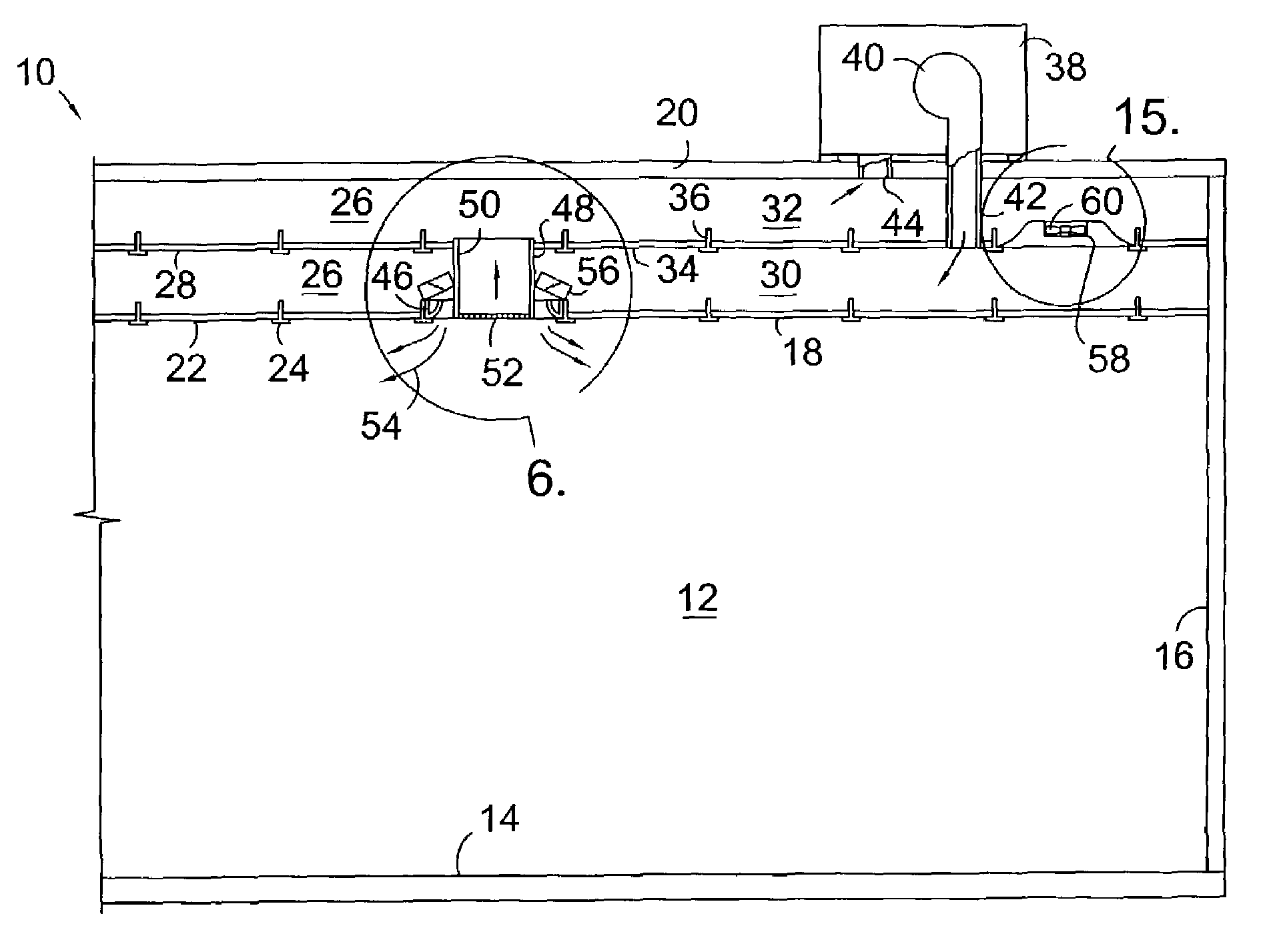Method and apparatus for delivering conditioned air using dual plenums
a technology of conditioned air and plenum, which is applied in the direction of ventilation systems, lighting and heating apparatus, heating types, etc., can solve the problems of large cost factor, unsatisfactory and add significantly to labor costs involved in constructing and finishing spaces, so as to improve the efficiency and economics of conditioned air delivery and the comfort of occupants
- Summary
- Abstract
- Description
- Claims
- Application Information
AI Technical Summary
Benefits of technology
Problems solved by technology
Method used
Image
Examples
first embodiment
[0131]A block diagram of one embodiment of the thermostat 326 that may be utilized to produce the signals discussed in the thermostat is shown in FIG. 39. This embodiment of the thermostat 326 includes a thermistor 364 and a user setpoint adjustment 366. Both the thermistor 364 and the user setpoint adjustment 366, either alone or in combination with other commonly understood components or circuits (which are not shown), provide a variable voltage as an output.
[0132]The thermistor 364 is operable to change its resistance in response to a change in the ambient temperature. More specifically, as the temperature of the thermistor 364 rises, its resistance decreases. The user setpoint adjustment 366 is also operable to change resistance to provide a variable voltage output, except that the user setpoint adjustment 366 is manually operable. As stated above, a variable resistor is one device that may be utilized as a user setpoint adjustment 366. In FIGS. 35 and 36, the leftmost thermosta...
second embodiment
[0140]In a second embodiment, the thermostat 326 produces the signals shown in FIG. 40. This embodiment illustrates a traditional “on-off” method in which for cooling mode the terminal unit 56 is open so long as the temperature is above the user setpoint and closed whenever the temperature is at of below the user setpoint. For heating mode, the conditions are reversed. In FIG. 40, the output signal for cooling mode are presented. When the temperature is above the setpoint, an on signal 386, which is a pulse that is generated periodically, opens the damper blade 216 of the terminal unit 56 and an off signal 388 remains low. When the temperature is below the setpoint, an off signal 390, which also is a pulse that is generated periodically, closes the damper blade 216 of the terminal unit 56 and an on signal 392 remains low.
[0141]A block diagram of one embodiment of a thermostat 326 that may be utilized to produce the signals discussed in the second embodiment of the thermostat is show...
PUM
 Login to View More
Login to View More Abstract
Description
Claims
Application Information
 Login to View More
Login to View More - R&D
- Intellectual Property
- Life Sciences
- Materials
- Tech Scout
- Unparalleled Data Quality
- Higher Quality Content
- 60% Fewer Hallucinations
Browse by: Latest US Patents, China's latest patents, Technical Efficacy Thesaurus, Application Domain, Technology Topic, Popular Technical Reports.
© 2025 PatSnap. All rights reserved.Legal|Privacy policy|Modern Slavery Act Transparency Statement|Sitemap|About US| Contact US: help@patsnap.com



